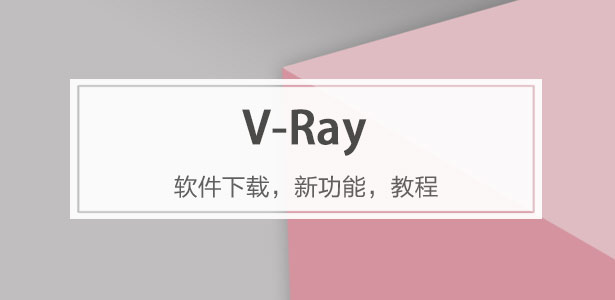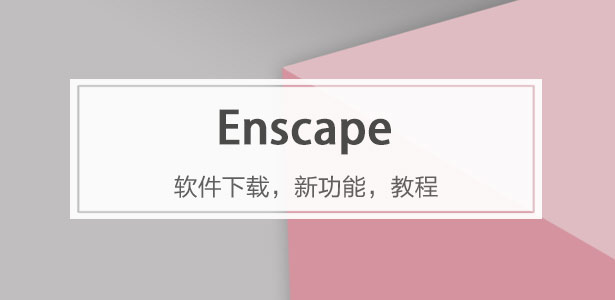
下載app免費領取會員





設計單位? 杭州蔣杰設計事務所(Jiangjie 0ffice)
項目地址? 浙江杭州
完工時間? 2025年4月
項目面積? 2000平方米
本文文字由設計單位提供。
BRITA 131藝術空間,由創始人蕭君在BAC藝術社區發起,旨在將當地藝術家的作品融入日常生活,并與更廣泛的公眾建立聯系。作為一家非營利藝術機構,它不僅是一個展示空間,更是一個交流平臺。
BRITA 131 Art Space recently opened its doors to the public. This project was initiated by founder Xiao Jun in the BAC art community, with the aim of integrating the works of local artists into daily life and connecting them with the wider public. As a non-profit art organization, it is not only an exhibition space, but also a communication platform.
項目背景與改造策略
Project Background and Transformation Strategy
BAC藝術社區位于杭州市西湖區轉塘(中國美院象山校區對面),原為一座廢棄了9年的爛尾樓,如今被改造成集藝術教學、創意辦公、公共美術館、設計酒店與商業街區于一體的藝術文化街區,總占地17.48畝,建筑面積37,900平方米,為年輕藝術群體提供完整的學習、工作、社交與生活環境。
BAC Art Community is located in Xihu District, Hangzhou, in the vicinity of Qutang (opposite to the Xiangshan Campus of the China Academy of Art). Originally a rotten building abandoned for 9 years, it has been transformed into an art and cultural district integrating art teaching, creative offices, a public gallery, a design hotel, and a commercial street area, with a total land area of 17.48 acres and a floor area of 37,900 square meters, providing a complete learning, working, social, and living environment for the young art community. It will provide a complete environment for young artists to study, work, socialize and live.

設計團隊Jiangjie Office在蔣杰的帶領下,將藝術社區的一部分地下空間改造為一個多功能藝術展覽與公共空間,總面積約2,000平方米,包括主展廳、策展型空間、藝術商店、下沉廣場、辦公與倉儲區域,以及兩個地面建筑——入口玻璃屋和B131咖啡館。同時,為該空間提出新的內容。
The design team Jiangjie Office, led by Jiangjie, transformed part of the underground space of BAC into a multi-functional art exhibition and public space with a total area of about 2,000 square meters, including the main exhibition hall, curatorial space, art store, sunken plaza, office and storage areas, and two ground-level buildings - the Entrance Glass House and B131. -Entrance Glass House and B131 Café. At the same time, new content is proposed for the space.


美術館的介入并非單純的空間改造,而是一種新的城市策略。它通過一系列邊界模糊的開放空間,與街區的流線、地面的步行系統相連接,使場地成為城市的一部分,而非孤立的建筑體。入口廣場、下沉庭院、咖啡館等區域構成了一個連續的公共場所,允許非美術館觀眾自然進入,模糊了展覽空間與城市生活之間的界限。
The intervention of the art gallery is not a mere spatial transformation, but a new urban strategy. It connects with the flow of the neighborhood and the pedestrian system at ground level through a series of open spaces with blurred boundaries, making the site part of the city rather than an isolated body of buildings. Areas such as the entrance plaza, the sunken courtyard, and the B131 café form a continuous public space that allows natural access for non-museum visitors, blurring the boundaries between the exhibition space and urban life.

水平展開的梯形屋頂
Horizontally Expanding Trapezoidal Roof
北側原自行車坡道被改造為美術館主入口,拆除厚重的鋼架后,設置了一個水平展開的梯形屋頂,由23根序列排列的圓柱支撐,使屋檐呈現輕盈、漂浮的姿態。柱廊強化了進入美術館的儀式感,賦予美術館入口一個具有辨識性的立面。主入口與對面的咖啡館構成對話,為展覽開幕提供了靈活的社交空間。
The former bicycle ramp on the north side of the building is transformed into the main entrance of the museum. After the removal of the heavy steel frame, a horizontally expanding trapezoidal roof is set up, which is supported by 23 sequentially aligned columns, giving the eaves a light and floating gesture. The colonnade reinforces the ritual of entering the museum and gives the entrance a recognizable fa?ade. The main entrance is in dialogue with the B131 café across the street, providing a flexible social space for the opening of the exhibition.








南側廢棄的自行車通道被拆除,形成一座露天的下沉廣場。設計團隊將光線引入地下空間,形成一個半戶外的公共廣場,為開幕派對、演出、論壇、休息和交流提供更多可能性。這一空間的設定,使美術館不再僅僅依賴展覽活動本身,而是通過建筑策略,主動介入并塑造場地的公共屬性。
The disused bicycle passageway on the south side was removed to form an open-air sunken plaza, which brings light into the underground space, creating a semi-outdoor public plaza with more possibilities for opening parties, performances, forums, resting and exchanges. The setting of this space allows the museum to no longer rely solely on the exhibition activities themselves, but to actively intervene and shape the public attributes of the site through architectural strategies.


展覽空間的秩序
The order of the exhibition space
地下展覽區域采用回字形動線,包含兩個展覽空間,可根據策展需求靈活調整面積。設計基于場地現狀,通過最小化的干預策略梳理空間秩序
The underground exhibition area adopts a zigzag dynamic line and contains two exhibition spaces, which can be flexibly adjusted in size according to curatorial needs. The design is based on the current situation of the site, and the spatial order is sorted out through the minimized intervention strategy.



展覽空間不僅是封閉的“展示盒子”,而是能夠容納多種事件和社交活動的場所。“回”字形動線加強了場地的連續性,使觀展路徑更加自由,而非被動地服從單一的敘事結構。 這一策略讓美術館的空間屬性更具彈性,與當代策展方式保持一致。整個美術館的氛圍輕松隨性,不拘泥于傳統美術館的嚴肅性,而是成為一個開放、多元、年輕的藝術場所。
The exhibition space is not just a closed “display box”, but a place that can accommodate multiple events and social activities. The zigzag pattern reinforces the continuity of the site, allowing for a freer path of viewing rather than passive obedience to a single narrative structure. This strategy allows the museum's spatial attributes to be more flexible, in keeping with contemporary curatorial approaches. The whole atmosphere of the gallery is relaxed and casual, not sticking to the seriousness of traditional art museums, but becoming an open, diversified and young art place.





BRITA 131藝術空間不僅是一個展覽空間,更是一個嵌入城市生活的開放場所。它的入口廣場、下沉庭院、咖啡館共同構成了一個連續的空間序列,使美術館的存在方式更加松弛、流動,而非封閉和自足。通過克制的建筑語言、精準的構造方式以及與城市環境的交互策略,建筑既成為場地的一部分,又對周邊產生積極影響,在建筑與自然、建筑與城市之間找到微妙的平衡。
BRITA 131 Art Space is not only an exhibition space, but also an open place embedded in urban life. Its entrance plaza, sunken courtyard, and B131 Café together form a continuous spatial sequence, making the art museum's way of being looser and more fluid rather than closed and self-contained. Through a restrained architectural language, a precise construction method, and an interactive strategy with the urban environment, the building becomes both a part of the site and a positive influence on the surrounding area, finding a delicate balance between architecture and nature, and architecture and the city.






設計圖紙 ▽






完整項目信息
項目名稱:BRITA 131藝術空間
項目地址:浙江杭州市轉塘
主創設計:蔣杰
設計單位:杭州蔣杰設計事務所(Jiangjie 0ffice)
設計團隊:章金誠、蔣知夏、李崇煒
完工時間:2025.4
項目面積:2000平方米
施工單位:Uhjoh伍匠及團隊
地板:Ugan concept
燈光配合:榮熙照明
攝影:Wen Studio
平面視覺:702 design
版權聲明:本文由杭州蔣杰設計事務所(Jiangjie 0ffice)授權發布。歡迎轉發,禁止以有方編輯版本轉載。
投稿郵箱:media@archiposition.com
本文版權歸腿腿教學網及原創作者所有,未經授權,謝絕轉載。

上一篇:[db:標題]
下一篇:BIM建筑|南京壓縮機廠保護與更新:尤家凹社區中心 / 東南大學建筑學院城市與建筑設計工作室






推薦專題
- 建筑賞析|“樹屋”重構居住想象,七個庭院圍合出的家,原來生活可以如此詩意
- 建筑賞析|從白盒子到街道:城市策展如何喚醒"沉睡的角落"?
- BIM建筑|華東師大滴水湖國際軟件學院 / EID Arch姜平工作室+華東院
- BIM建筑|南京壓縮機廠保護與更新:尤家凹社區中心 / 東南大學建筑學院城市與建筑設計工作室
- BIM建筑|地下美術館:BRITA 131藝術空間 / 蔣杰設計事務所
- 建筑賞析|珠江畔的空中伊甸園——琶洲雅詩閣酒店
- BIM建筑|空谷傳響:17座墓園建筑攝影
- BIM建筑|比利時Royale Belge大樓改造,20世紀總部地標的新生
- 建筑賞析|華發靜安里:時間繁花,續寫百年盛情
- 建筑賞析|會發電的“波浪屋頂”VS會呼吸的“空中森林”:米蘭冬奧建筑玩起“超能力大賽”



































